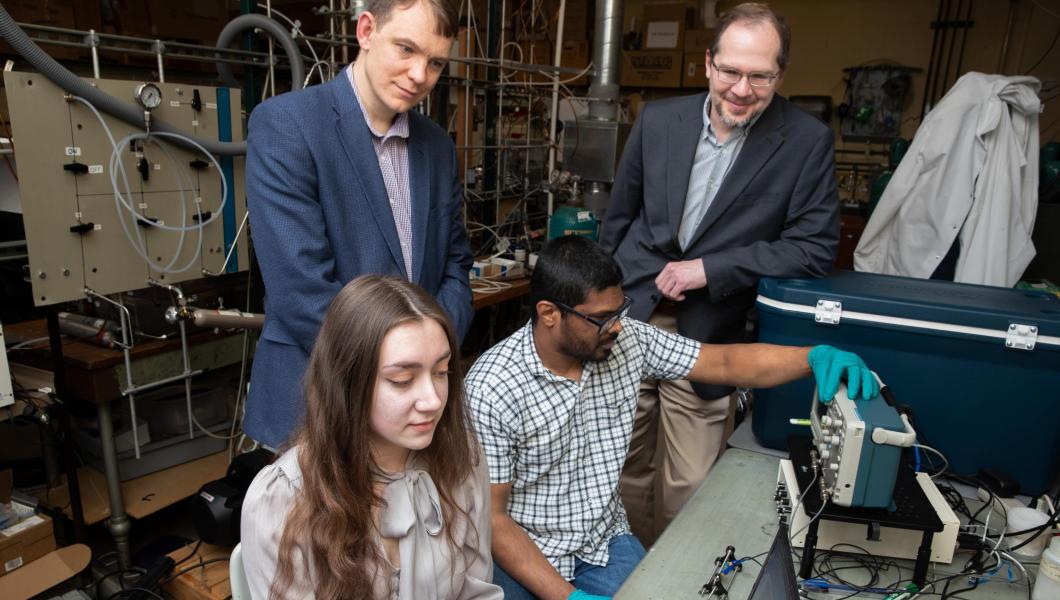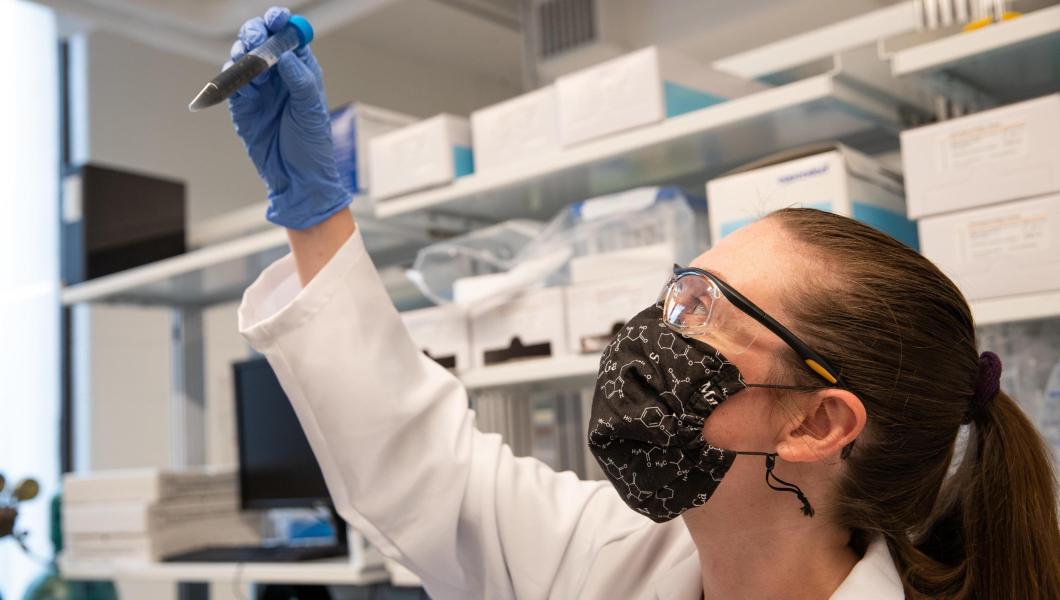NJIT Joins NASA-Funded Project Where You Can Be a "Solar Jet Hunter"

Scientists at NJIT’s Center for Solar-Terrestrial Research (CSTR) are joining a new research project, led by researchers at the University of Minnesota (UMN) with support from NASA, which will give volunteering citizen-scientists the chance to contribute toward our understanding of explosive activity on the Sun — all from the comfort of their own computers.
Through the project Solar Jet Hunter, participants will help to identify bursts of plasma from the Sun, known as solar jets, by analyzing thousands of images taken by NASA’s Solar Dynamic Observatory (SDO) over the last 11 years.
The project is the newest citizen science project under the Zooniverse platform originated at the University of Minnesota. Zooniverse is the “world’s largest and most popular people-powered online research platform, with more than 2 million volunteers from around the world contributing to academic research,” according to a UMN press release announcing the project.
“These solar jets are sort of like a million hydrogen bombs going off on the star that’s actually not that far away from us, so it is important that we try to understand more about how that happens,” said Lindsay Glesener, a University of Minnesota associate professor of physics and astronomy. “But with our small research team, it would probably take a decade or more to look through all these images ourselves so we’re asking for help.”
“This project will enable us for the first time to quantitatively address a long-standing question of particle acceleration in solar jets … how often, under which conditions, and with what efficiency solar jets can accelerate electrons to high nonthermal energies,” said Gregory Fleishman, distinguished research professor at CSTR/NJIT and co-investigator of the project. “Jets trace open field lines — the possible routes for solar energetic particles to escape the Sun towards interplanetary space up to the Earth’s orbit and beyond.”
Above: This video is a sequence of still images showing solar jets or bursts of plasma coming off the Sun. By studying them, astronomers learn more about the energy that comes from our closest star. Credit: NASA
As the name implies, Solar Jet Hunter volunteers will search, find and annotate solar jet activity they observe from SDO’s still image footage. Their work will be used to build a new solar jet database, enabling researchers to bypass vast amounts of solar data and focus on the most important points of these rapidly occurring events, which involve matter ejected in the solar atmosphere at upward of a million miles per hour.
“Solar jets are very difficult to identify in any sort of automatic way,” said Sophie Musset, a research fellow at the European Space Agency and former University of Minnesota postdoctoral researcher who is leading the Solar Jet Hunter project. “You can’t just write a piece of code that will tell the computer to search and find all of the solar jets, but it's very easy to see with human eyes.”
At NJIT-CSTR, Fleishman runs an ambitious solar modeling program where he will contribute to the Solar Jet Hunter project by developing and investigating three-dimensional models of a set of selected jets identified by citizen-scientists within the Zooniverse Jet Hunter stage of the project. “Another contribution from NJIT to the project will be microwave data on the selected jets obtained with NJIT's Extended Owens Valley Solar Array (EOVSA), which will bring unique morphological data of the jets along with diagnostics of the coronal magnetic field and nonthermal electrons accelerated in the jets,” added Fleishman.
Credit: Solar Jet Hunter, Zooniverse
Information from the project will also be used to build a computer algorithm that can speed future identification of solar jets.
“While Zooniverse has been involved in all kinds of citizen science projects from the humanities to biology, this project brings us back to our astrophysics roots,” said Lucy Fortson, University of Minnesota physics and astronomy professor and one of the founders of the Zooniverse platform. “Our partnership with NASA and the Adler Planetarium has expanded our capacity to take on important projects like this one and increased the acceptance of citizen science as a valid research methodology within the scientific community. This is real proof that citizen science has come of age as a research tool.”
The Solar Jet Hunter international research team also includes co-investigator Navdeep Panesar, a research scientist at Lockheed Martin Solar and Astrophysics Laboratory and Bay Area Environmental Research Institute. Other members of the team include Erik Ostlund, a Zooniverse web developer at the University of Minnesota; Suhail Alnahari, a data scientist in the University of Minnesota’s School of Physics and Astronomy; University of Minnesota graduate students Yixian Zhang and Charlie Kapsiak; Mariana Jeunon, graduate student at Catholic University of America in Washington, D.C.; and Paloma Jol, a master student at Leiden University in The Netherlands.
The Solar Jet Hunter citizen science project is funded by NASA under the Heliophysics Guest Investigators program, and has supported students under a U.S. National Science Foundation CAREER grant.
To join the project, visit the Solar Jet Hunter website.

